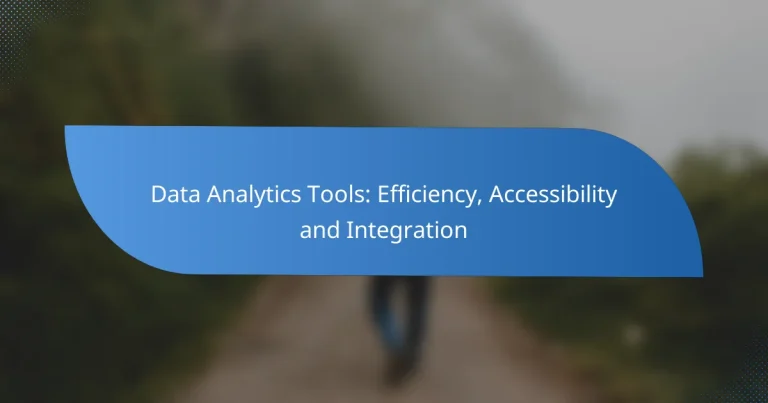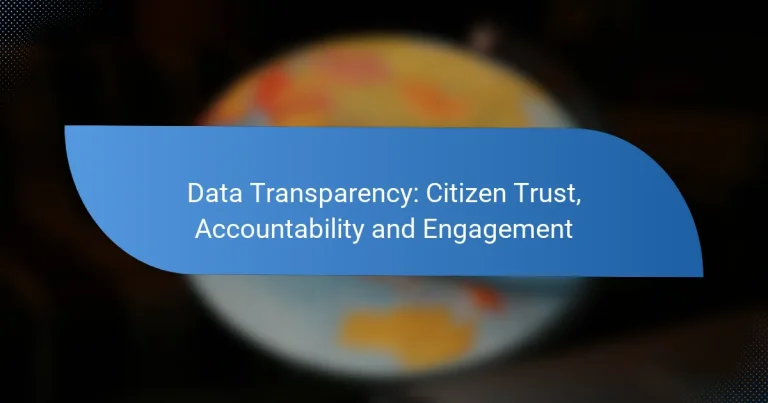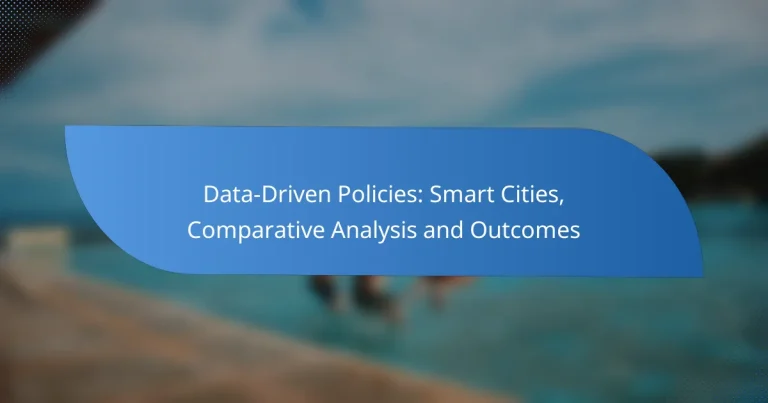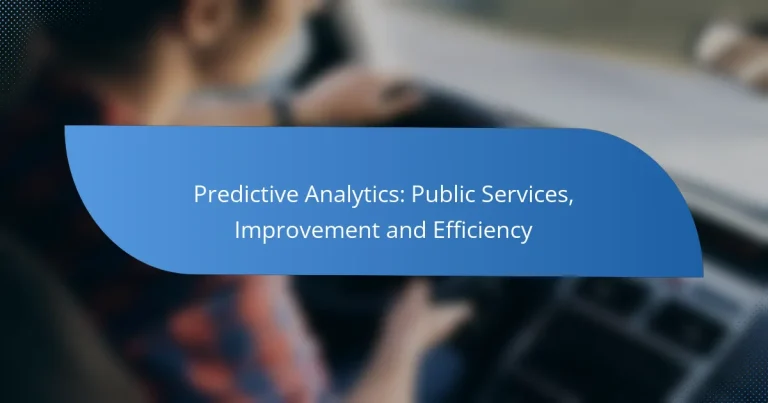Urban Data: Collection, Analysis and Application
Urban data encompasses a wide range of information collected through methods such as surveys, sensor networks, and social media analytics, providing valuable insights into city dynamics and citizen behavior. The analysis of this data is essential for applications like smart city planning, traffic management, and public health monitoring, ultimately enhancing the efficiency and quality of urban life.

How Is Urban Data Collected?
Urban data is collected through various methods that capture information about city dynamics, infrastructure, and citizen behavior. These methods include surveys, sensor networks, mobile data tracking, social media analytics, and public records, each offering unique insights and data types.
Surveys and Questionnaires
Surveys and questionnaires are structured tools used to gather information directly from residents about their experiences and preferences. They can be distributed online or in person and often include multiple-choice questions, rating scales, and open-ended responses.
When designing surveys, it’s crucial to keep questions clear and concise to avoid confusion. Consider targeting specific demographics to ensure the data reflects diverse perspectives within the urban population.
Sensor Networks
Sensor networks consist of interconnected devices that collect real-time data on various urban parameters, such as air quality, traffic flow, and noise levels. These sensors can be placed throughout a city to monitor environmental conditions continuously.
Implementing sensor networks requires careful planning regarding placement and maintenance. They can provide valuable insights but may also involve significant initial investment and ongoing operational costs.
Mobile Data Tracking
Mobile data tracking utilizes information from smartphones to analyze movement patterns and behaviors of urban residents. This data can reveal trends in commuting, shopping, and recreational activities, helping city planners make informed decisions.
Privacy concerns are paramount when using mobile data, so it’s essential to comply with local regulations regarding data protection and anonymization. Engaging with residents about how their data will be used can also foster trust.
Social Media Analytics
Social media analytics involves examining posts, comments, and interactions on platforms like Twitter, Facebook, and Instagram to gauge public sentiment and trends. This method can provide real-time insights into community issues and interests.
Using social media data effectively requires tools for sentiment analysis and trend tracking. However, be cautious of biases in the data, as not all demographics are equally represented on social media platforms.
Public Records
Public records are official documents maintained by government agencies that can include data on property ownership, business licenses, and demographic statistics. These records are often accessible to the public and can provide a wealth of information for urban analysis.
When utilizing public records, ensure you understand the legal requirements for access and usage. Cross-referencing these records with other data sources can enhance the accuracy and depth of urban studies.
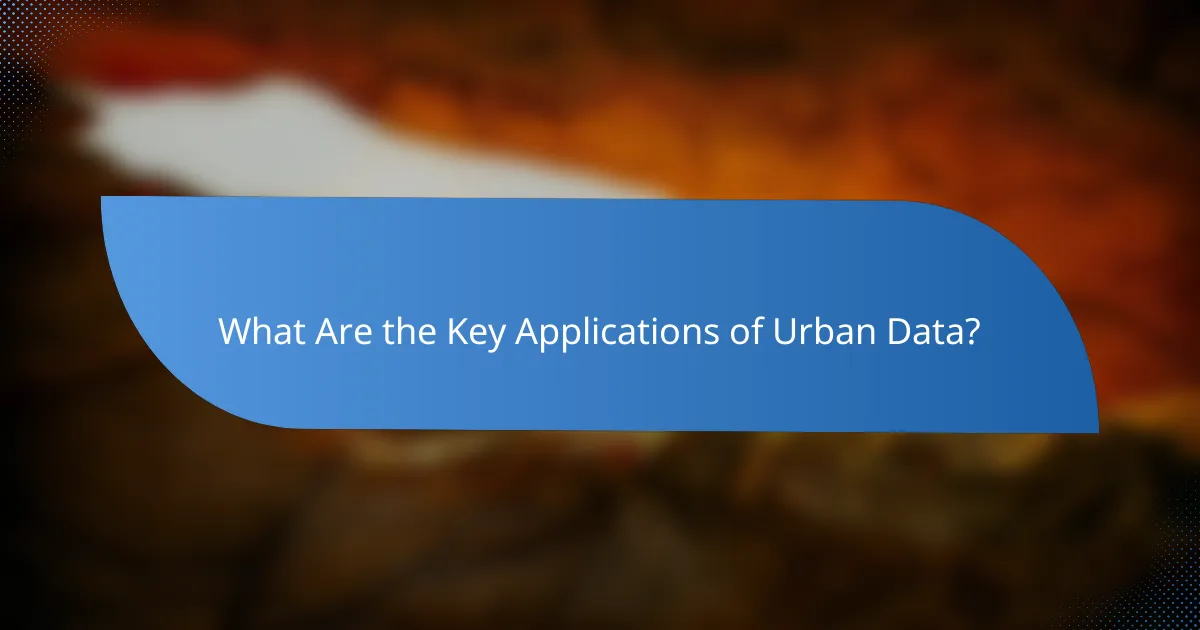
What Are the Key Applications of Urban Data?
Urban data plays a crucial role in enhancing city life through various applications that improve efficiency and quality of living. Key applications include smart city planning, traffic management systems, public health monitoring, and environmental sustainability initiatives.
Smart City Planning
Smart city planning utilizes urban data to design and enhance urban environments, ensuring they meet the needs of residents and businesses. This involves analyzing demographic trends, land use, and infrastructure to create efficient layouts and services.
For effective smart city planning, stakeholders should consider community input, technological capabilities, and sustainability goals. Tools like Geographic Information Systems (GIS) can help visualize data and inform decision-making processes.
Traffic Management Systems
Traffic management systems leverage urban data to optimize traffic flow and reduce congestion. By analyzing real-time data from sensors and cameras, cities can adjust traffic signals, provide real-time updates to drivers, and implement congestion pricing where necessary.
Effective traffic management can lead to reduced travel times and lower emissions. Cities should focus on integrating various data sources, such as public transportation schedules and pedestrian patterns, to create a comprehensive traffic strategy.
Public Health Monitoring
Public health monitoring uses urban data to track health trends and outbreaks within communities. By analyzing data from hospitals, clinics, and environmental sensors, health officials can identify potential health risks and allocate resources effectively.
To enhance public health monitoring, cities should establish partnerships with healthcare providers and utilize mobile health applications to gather data. Regularly updating health databases can help in responding swiftly to emerging health issues.
Environmental Sustainability
Environmental sustainability initiatives rely on urban data to assess and mitigate the impact of urbanization on the environment. This includes monitoring air and water quality, energy consumption, and waste management practices.
Cities can implement data-driven strategies such as smart waste collection systems and renewable energy projects. Engaging the community in sustainability efforts and promoting awareness can further enhance the effectiveness of these initiatives.
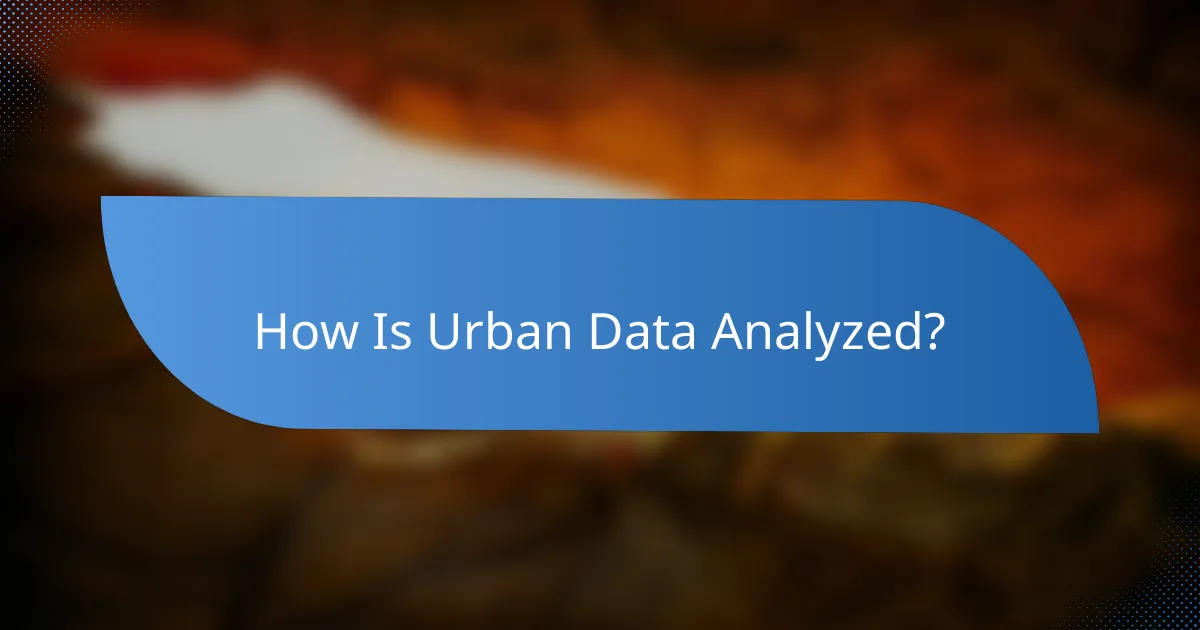
How Is Urban Data Analyzed?
Urban data analysis involves various methods to extract meaningful insights from large datasets collected in urban environments. This process typically includes data mining, machine learning, geospatial analysis, and predictive analytics to inform decision-making and improve city management.
Data Mining Techniques
Data mining techniques are essential for discovering patterns and relationships in urban datasets. Common methods include clustering, classification, and association rule mining, which help identify trends and anomalies in data such as traffic patterns or housing prices.
For instance, clustering can group similar neighborhoods based on socioeconomic factors, while classification can predict property values based on historical data. Effective data mining requires a clear understanding of the data’s context and the specific questions being addressed.
Machine Learning Algorithms
Machine learning algorithms enhance urban data analysis by enabling predictive modeling and automation. Techniques like regression analysis, decision trees, and neural networks can be applied to forecast urban phenomena, such as traffic congestion or energy consumption.
For example, a regression model might analyze past traffic data to predict future congestion levels during peak hours. It is crucial to select the right algorithm based on the data characteristics and the desired outcome to avoid overfitting or underfitting the model.
Geospatial Analysis
Geospatial analysis focuses on the spatial aspects of urban data, utilizing geographic information systems (GIS) to visualize and interpret data in a spatial context. This analysis helps urban planners understand the distribution of resources, infrastructure, and demographics across different areas.
Techniques such as heat mapping can illustrate areas of high foot traffic or crime rates, guiding resource allocation and policy decisions. Incorporating local geographic features into the analysis enhances the relevance and accuracy of the insights derived.
Predictive Analytics
Predictive analytics uses historical data and statistical algorithms to forecast future events in urban settings. This approach can help cities anticipate issues like public health outbreaks or infrastructure failures, allowing for proactive measures.
For example, predictive models can analyze patterns in public transport usage to optimize schedules and routes. It is important to continuously validate and refine these models to ensure their accuracy and effectiveness in real-world applications.
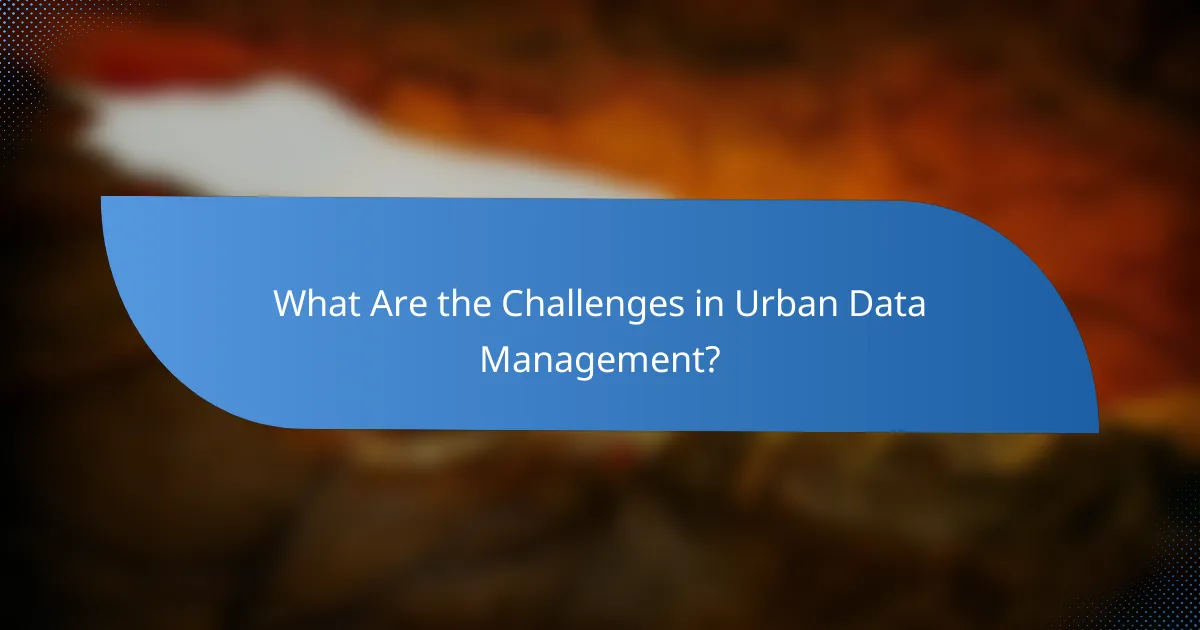
What Are the Challenges in Urban Data Management?
Urban data management faces several challenges, including data privacy concerns, integration issues, and ensuring the quality and accuracy of data. Addressing these challenges is crucial for effective urban planning and decision-making.
Data Privacy Concerns
Data privacy is a significant challenge in urban data management, as cities collect vast amounts of personal information from residents. Ensuring compliance with regulations like the General Data Protection Regulation (GDPR) in Europe is essential to protect citizens’ privacy.
To mitigate privacy risks, cities should implement strong data governance frameworks, anonymize sensitive data, and engage with the community to build trust. Regular audits and transparency in data usage can further enhance public confidence.
Data Integration Issues
Integrating data from various sources, such as transportation, utilities, and public services, poses a challenge for urban data management. Different systems often use incompatible formats and standards, making it difficult to create a cohesive data ecosystem.
To overcome integration issues, cities can adopt open data standards and invest in middleware solutions that facilitate data sharing. Collaboration between departments and stakeholders is vital to ensure that data flows seamlessly across platforms.
Quality and Accuracy of Data
The quality and accuracy of urban data are critical for reliable analysis and decision-making. Inaccurate or outdated data can lead to poor planning and resource allocation, impacting city services and infrastructure.
To maintain high data quality, cities should establish rigorous data collection protocols, conduct regular data audits, and utilize automated validation tools. Training staff on data management best practices can also help ensure that data remains accurate and relevant.
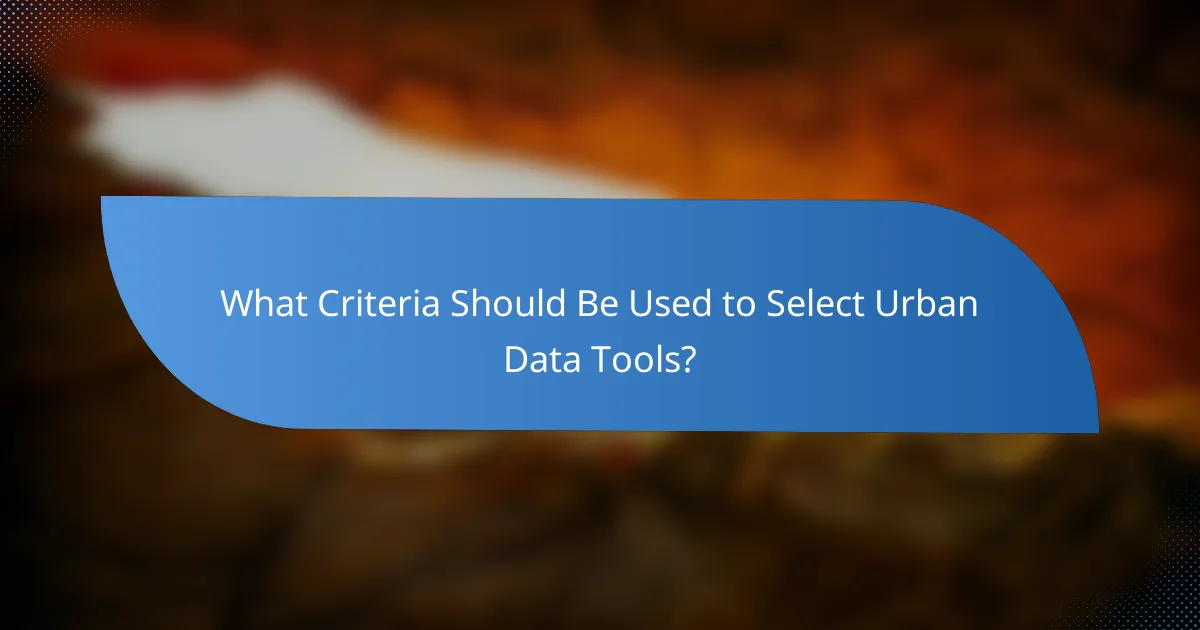
What Criteria Should Be Used to Select Urban Data Tools?
Selecting urban data tools requires careful consideration of several key criteria that ensure effectiveness and efficiency. Scalability, user-friendliness, and integration capabilities are essential factors that can significantly impact the success of urban data initiatives.
Scalability
Scalability refers to the ability of a data tool to handle increasing amounts of data and users without performance degradation. When evaluating tools, consider whether they can grow with your urban data needs, accommodating larger datasets and more complex analyses over time.
For instance, a tool that performs well with a few hundred data points may struggle with millions. Look for solutions that offer cloud-based options or modular designs, which can expand as your requirements evolve.
User-Friendliness
User-friendliness is crucial for ensuring that all stakeholders can effectively utilize urban data tools. A tool should have an intuitive interface, clear navigation, and accessible support resources to facilitate user engagement.
Consider tools that provide tutorials, documentation, and community forums. A user-friendly tool can reduce training time and increase adoption rates, making it easier for city planners and analysts to derive insights from data.
Integration Capabilities
Integration capabilities determine how well a data tool can work with existing systems and datasets. A good urban data tool should seamlessly connect with other software, databases, and APIs, allowing for a holistic view of urban analytics.
Evaluate whether the tool supports common data formats and standards, such as CSV or JSON, and check for compatibility with GIS systems or other urban planning software. Effective integration can streamline workflows and enhance data accuracy across platforms.

